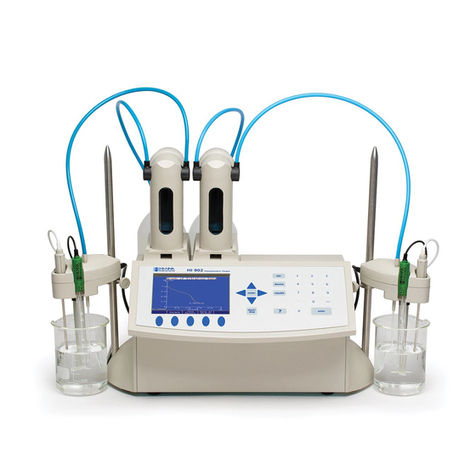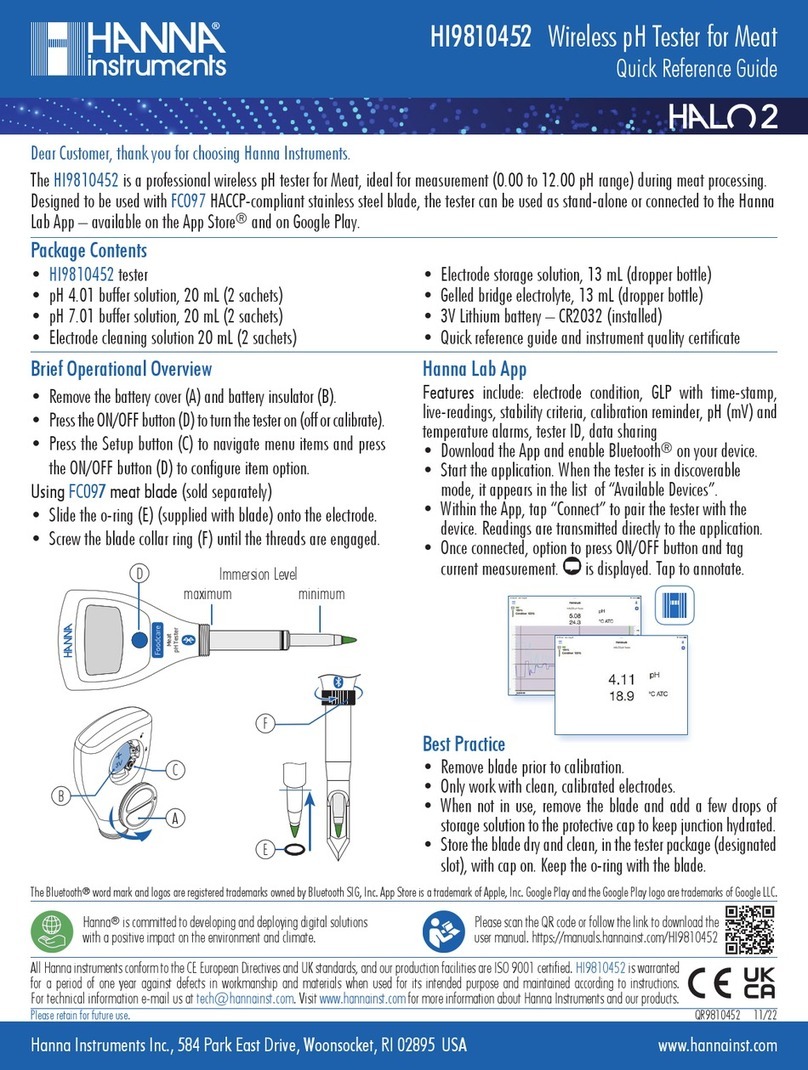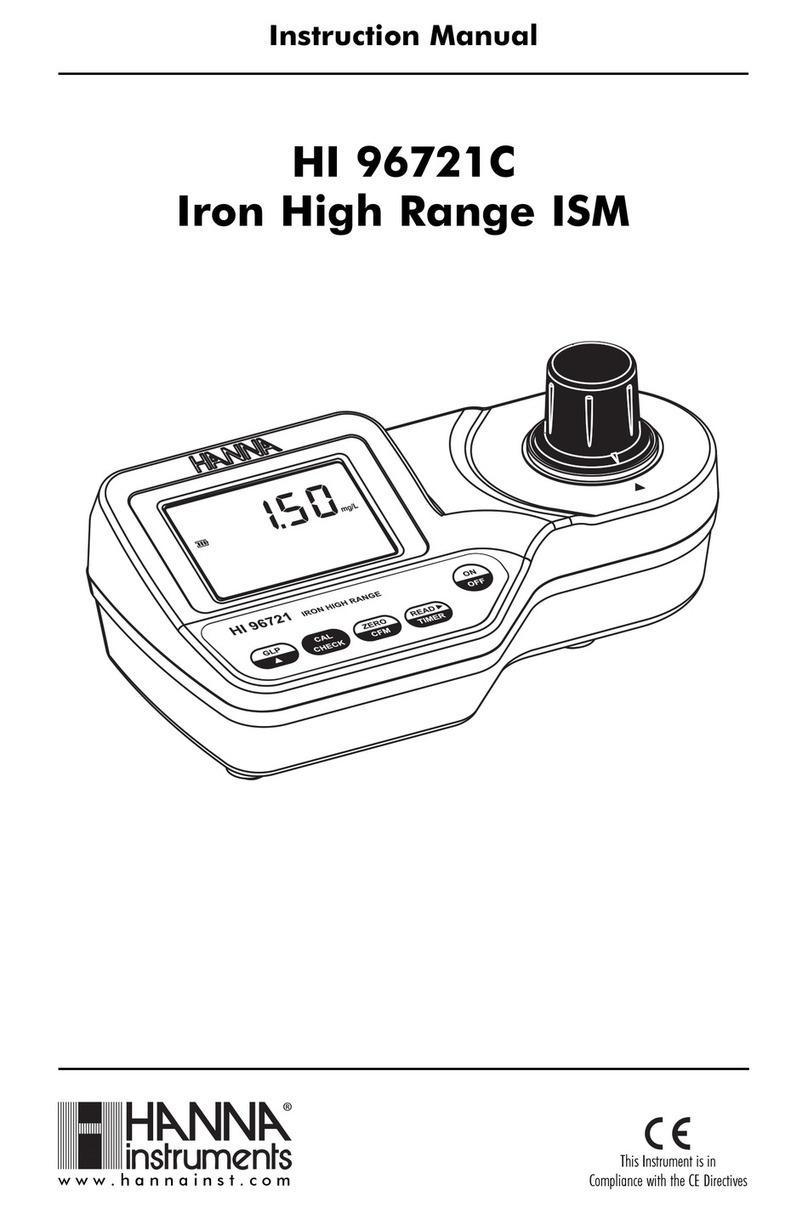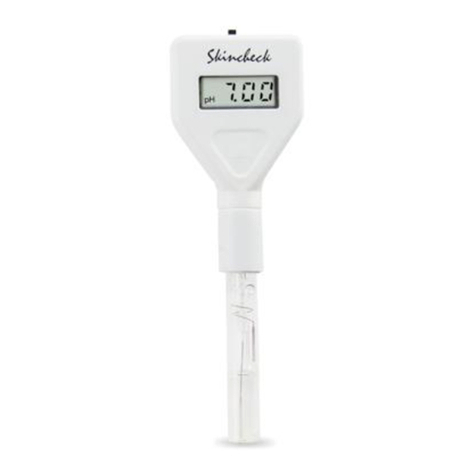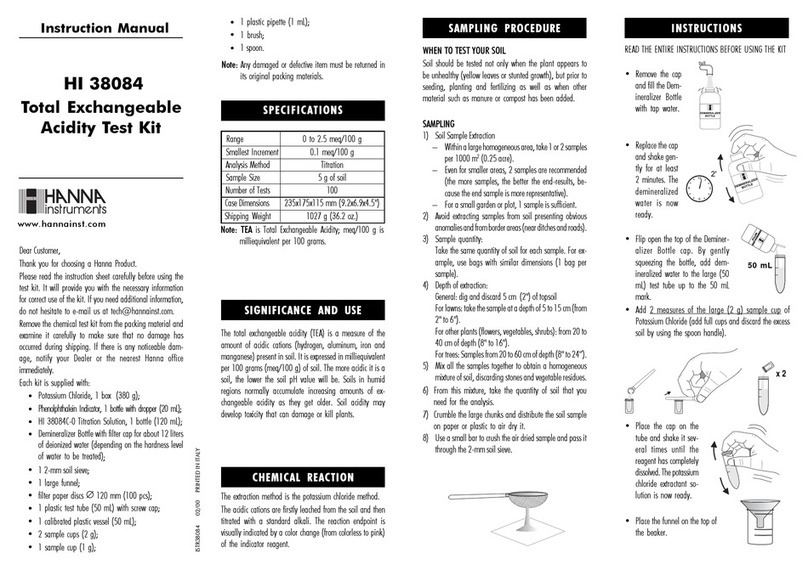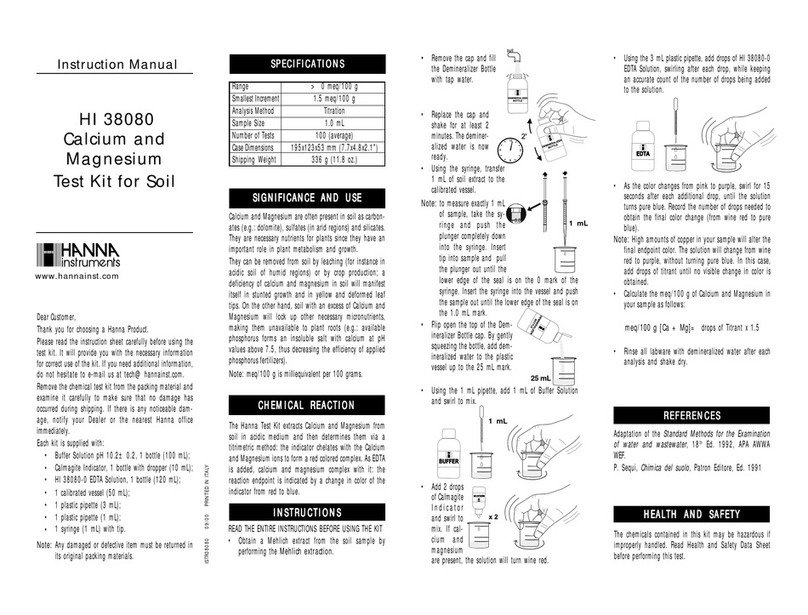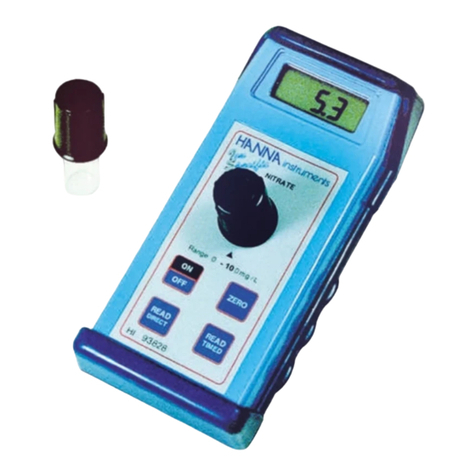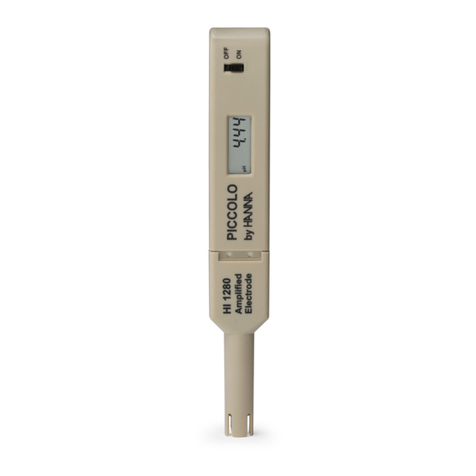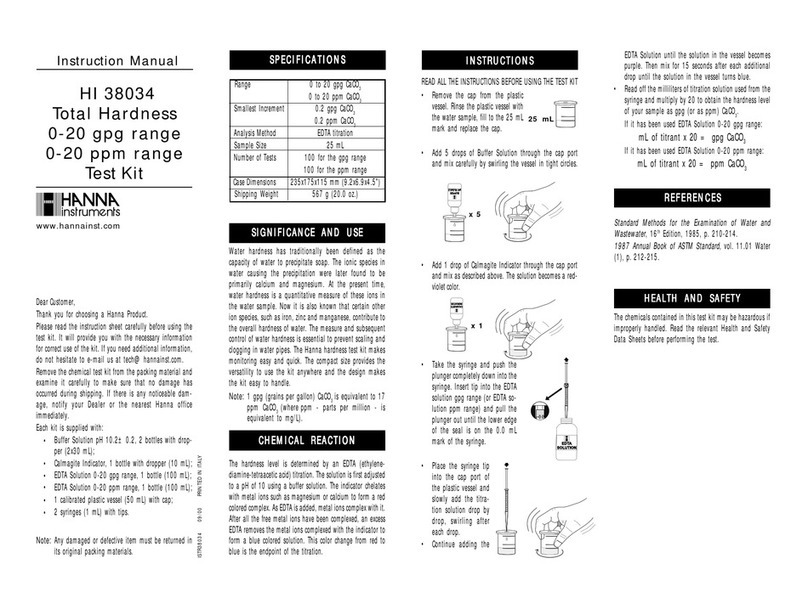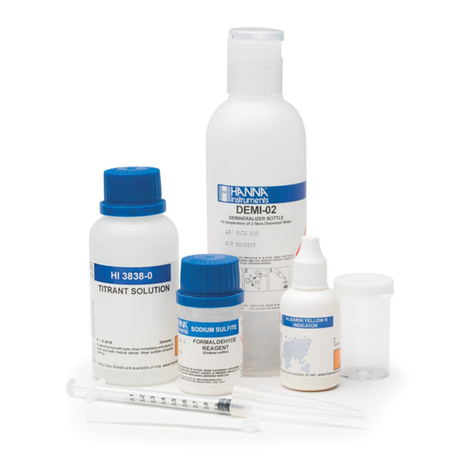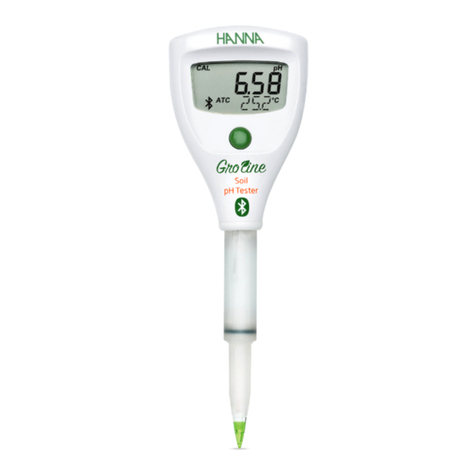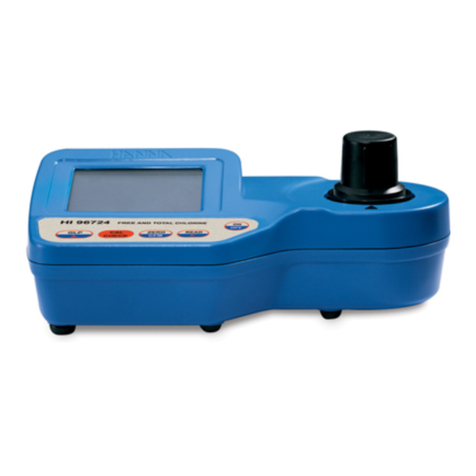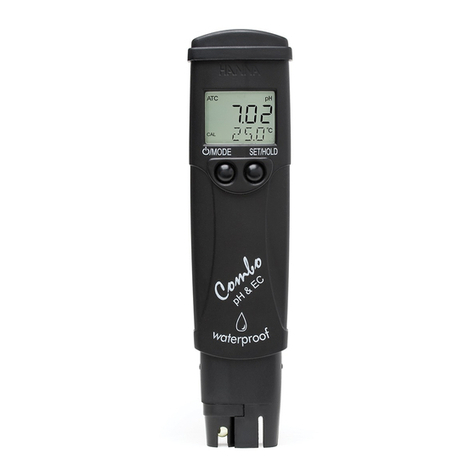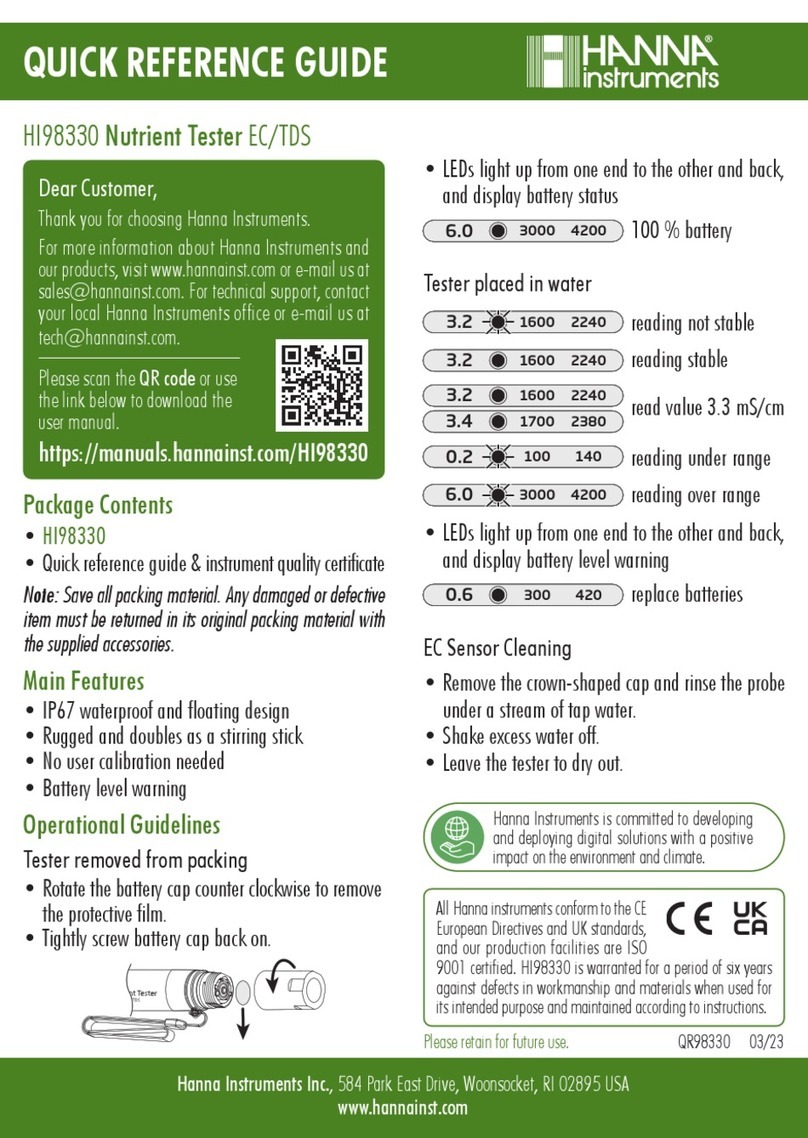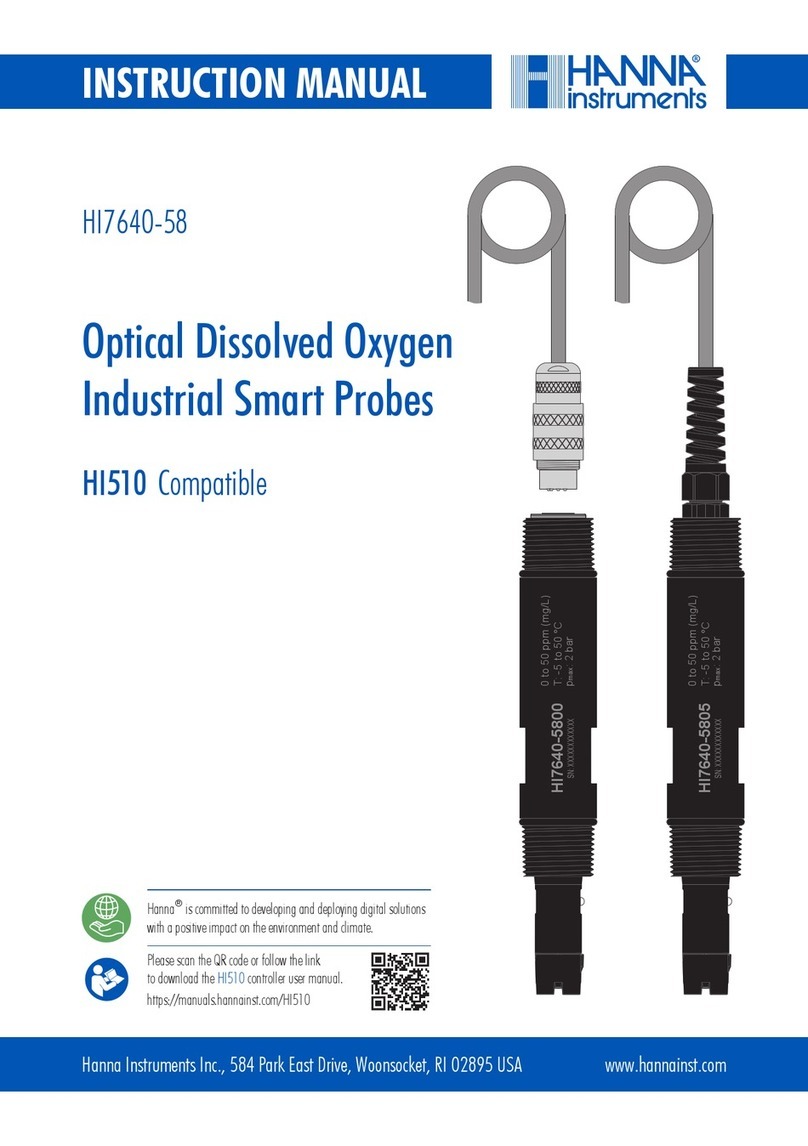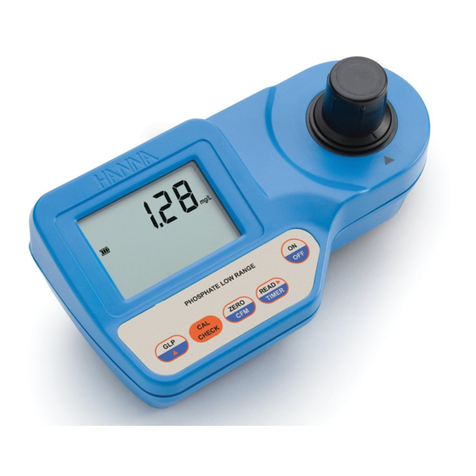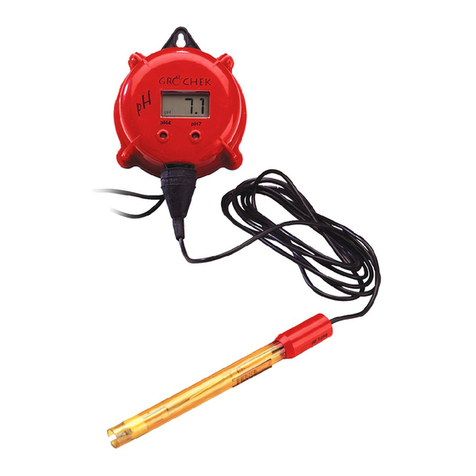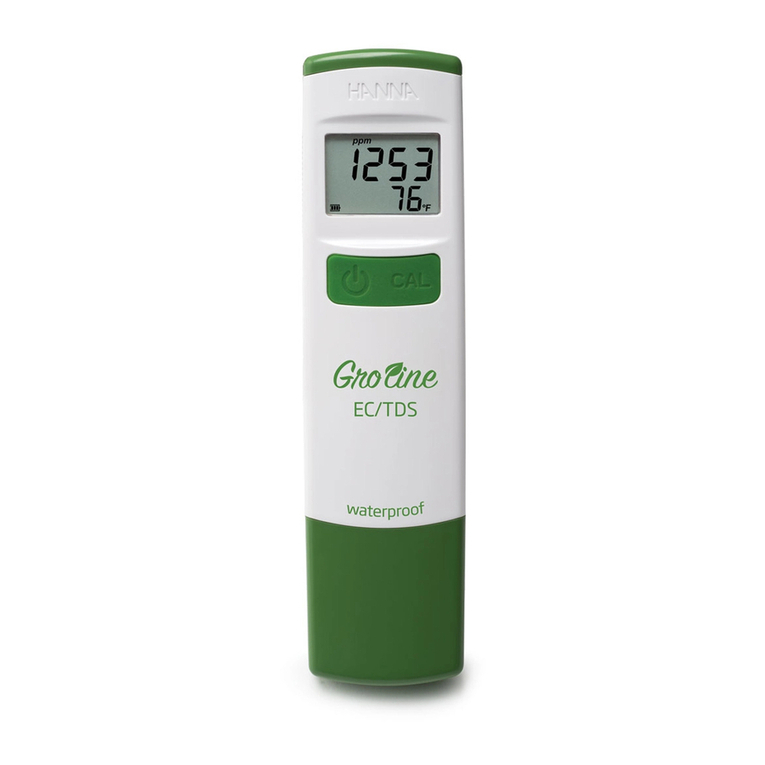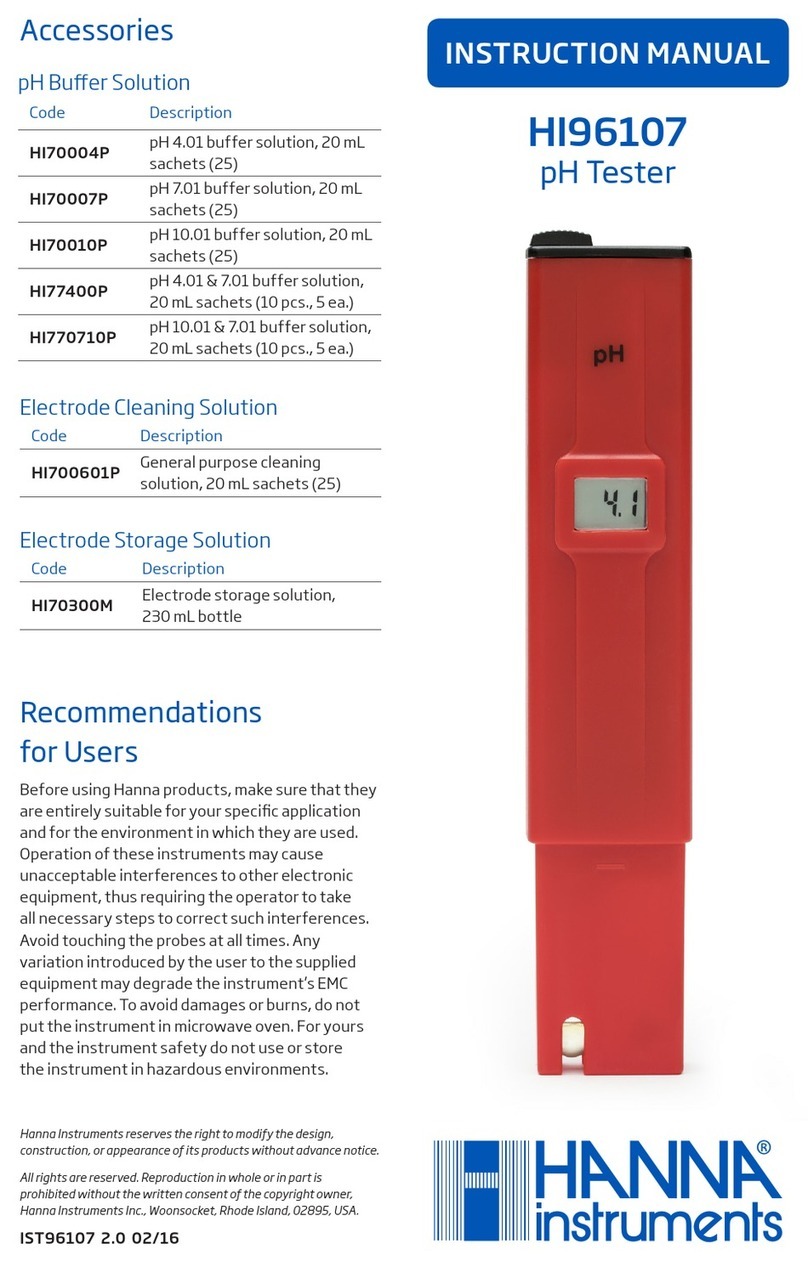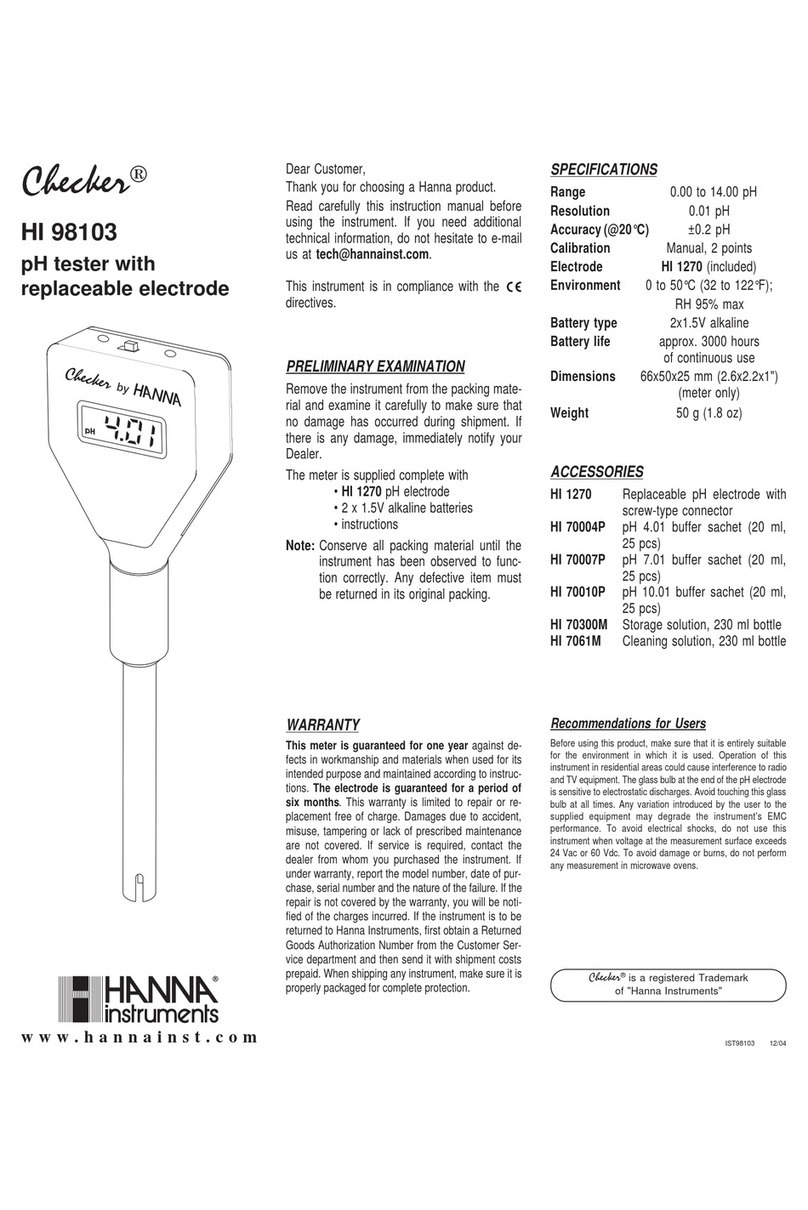HI 38035
Total Hardness
and Calcium
Test Kit
Instruction Manual
ISTR38035 11/00 PRINTED IN ITALY
Water hardness has traditionally been defined as the
capacity of water to precipitate soap. The ionic species in
water causing the precipitation were later found to be
primarily calcium and magnesium. At the present time,
water hardness is a quantitative measure of these ions in
the water sample. Now it is also known that certain other
ion species, such as iron, zinc and manganese, contribute to
the overall hardness of water. The measure and subsequent
control of water hardness is essential to prevent scaling and
clogging in water pipes. Calcium concentration in water
depends on the source and on water treatment. Calcium
contributes to the total hardness of water.
The Hanna total hardness and calcium test kit makes
monitoring easy and quick. The compact size provides the
versatility to use the kit anywhere and the design makes
the kit easy to handle.
Note: 1 gpg (grains per gallon) CaCO3 is equivalent to 17
ppm CaCO3 (where ppm - parts per million - is
equivalent to mg/L).
Range 0 to 20 gpg CaCO3 as total hardness
0 to 20 gpg CaCO3 as Ca
Smallest Increment 0.2 gpg CaCO3 as total hardness
0.2 gpg CaCO3as Ca
Analysis Method EDTA titration
Sample Size 25 mL
Number of Tests 100 (Total Hardness), 100 (Calcium)
CaseDimensions 370x270x80 mm (14.6x10.6x3.1")
Shipping Weight 960 g (33.9 oz.)
SPECIFICATIONSSPECIFICATIONS
SPECIFICATIONSSPECIFICATIONS
SPECIFICATIONS
SIGNIFICANCE AND USESIGNIFICANCE AND USE
SIGNIFICANCE AND USESIGNIFICANCE AND USE
SIGNIFICANCE AND USE
CHEMICAL REACTIONCHEMICAL REACTION
CHEMICAL REACTIONCHEMICAL REACTION
CHEMICAL REACTION
The total hardness level is determined by an EDTA (ethylene-
diamine-tetraaceticacid) titration.The solutionis firstadjusted
to a pH of 10 using a buffer solution. The indicator chelates
with metal ions such as magnesium or calcium to form a red
coloredcomplex. AsEDTAisadded,metalionscomplexwithit.
After all the free metal ions have been complexed, an excess
EDTA removes the metal ions complexed with the indicator to
form a blue colored solution. This color change from red to
blue is the endpoint of the titration.
READ ALL THE INSTRUCTIONS BEFORE USING THE TEST KIT
Determination of Total Hardness
• Remove the cap from the plastic
vessel. Rinse the plastic vessel with
the water sample, fill to the 25 mL
mark and replace the cap.
• Add 5 drops of Buffer Solution through the cap port
and mix carefully swirling the vessel in tight circles.
• Add 1 drop of Calmagite Indicator through the cap port
and mix as described above. The solution becomes a red-
violetcolor.
• Take the syringe and push the
plunger completely down into the
syringe. Insert tip into the EDTA
solution gpg range and pull the
plunger out until the lower edge of
the seal is on the 0.0 mL mark of
the syringe.
• Place the syringe tip
into the cap port of
the plastic vessel and
slowly add the titra-
tion solution drop by
drop,swirlingaftereach
drop.
INSTRUCTIONSINSTRUCTIONS
INSTRUCTIONSINSTRUCTIONS
INSTRUCTIONS
DearCustomer,
Thank you for choosing a Hanna Product.
Please read the instruction sheet carefully before using the
test kit. It will provide you with the necessary information
for correct use of the kit. If you need additional information,
Remove the chemical test kit from the packing material and
examine it carefully to make sure that no damage has
occurred during shipping. If there is any noticeable dam-
age, notify your Dealer or the nearest Hanna office
immediately.
Each kit is supplied with:
•Buffer Solution pH 10.2±0.2, 1 bottle with dropper
(30 mL);
•Calmagite Indicator, 1 bottle with dropper (10 mL);
•EDTA Solution 0-20 gpg range, 1 bottle (100 mL);
• HI 38035A-0 Calcium Reagent, 1 bottle with drop-
per (10 mL);
• HI 38035B-0 Calcium Reagent, 1 bottle with drop-
per (10 mL);
• HI38035C-0Calcium Reagent, 1bottlewith dropper
(15 mL);
• HI 38035D-0 Calcium Reagent, 1 bottle (100 mL);
•1 calibrated plastic vessel (50 mL) with cap;
•1 syringe (1 mL) with two tips.
Note: Any damaged or defective item must be returned in
its original packing materials.
25 mL
x 5
x 1
www.hannainst.com
• Continue adding the EDTA Solution until the solution in
thevesselbecomespurple.Then mixfor 15secondsafter
each additional drop until the solution in the vessel
turns blue.
• Readoffthe milliliters oftitrationsolutionused fromthe
syringe and multiply by 20 to obtain the hardness level
of your sample as gpg CaCO3.
mL of titrant x 20 = gpg CaCO3
Determination of Calcium
• Remove the cap from the plastic
vessel. Rinse the plastic vessel with
the water sample, fill to the 25 mL
mark and replace the cap.
• Add 2 drops of HI 38035A-0 Calcium Reagent through
the cap port and mix carefully by swirling the vessel in
tightcircles.
• Add 1 drop of HI 38035B-0 Calcium Reagent through
the cap port and mix as described above.
• Add 3 drops of HI 38035C-0 Calcium Reagent through
the cap port and mix as described above. The solution
will turn blue.
25 mL
x 1
x 3
x 2
Calcium concentration is determined by an EGTA titration.
Zinconindicatordetermines a bluecolorinthe solution.The
reaction endpoint is indicated by a change in color from
blue to orange.
